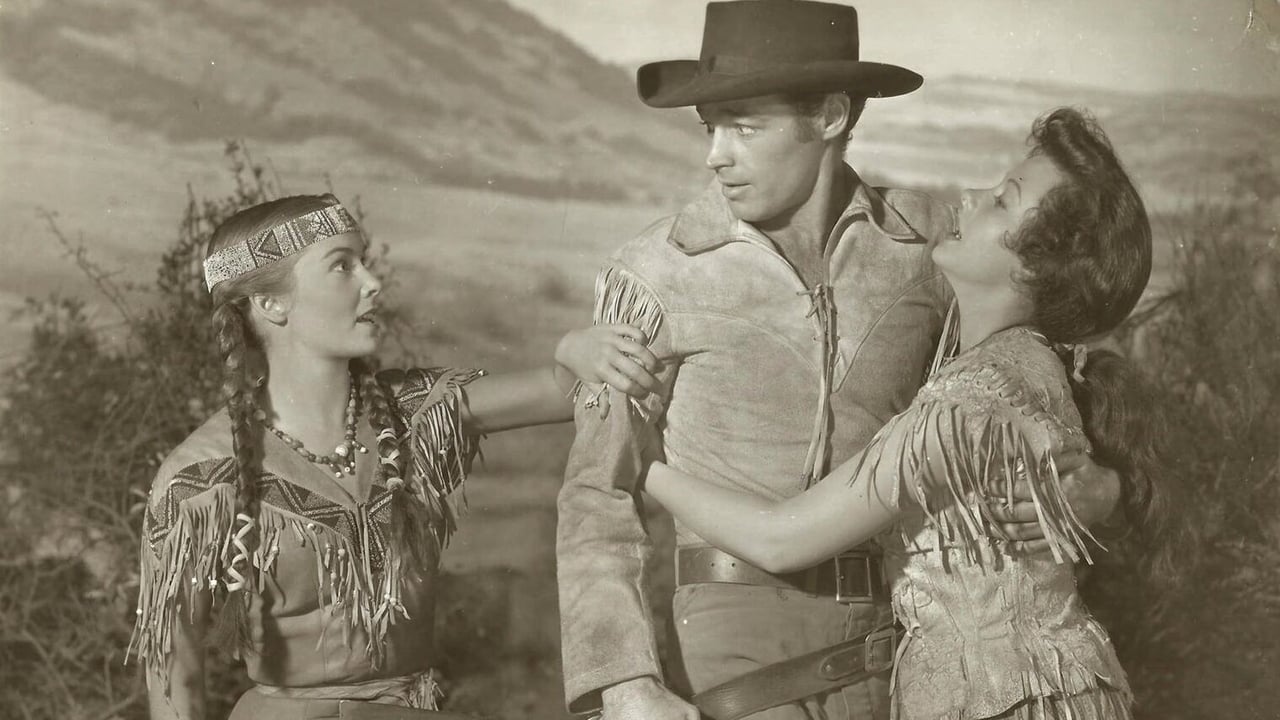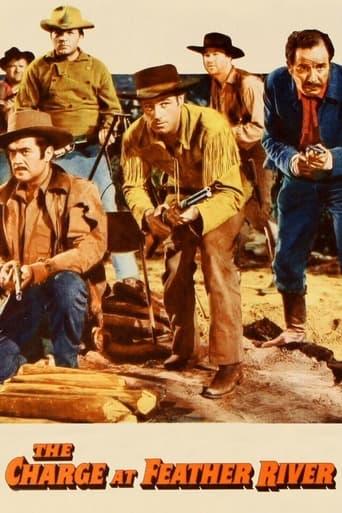



disgusting, overrated, pointless
It's hard to see any effort in the film. There's no comedy to speak of, no real drama and, worst of all.
View MoreExcellent and certainly provocative... If nothing else, the film is a real conversation starter.
View MoreThe film's masterful storytelling did its job. The message was clear. No need to overdo.
View MoreFirst thing I would like to know is: Why the Feather River? The only Feather River I could find reference to is in northern CA, hardly Cheyenne country. At one point, Guy Madison mentions a place called Three Forks. The Feather River famously has 3 main tributaries(forks) that come together at one point! I could find no reference to a Fort Darby: the main featured fort. From other info I have read, it's clear that this is a renaming of historic Fort Wallace: the western-most army fort in Kansas during the post-Civil War era...Chief Thunderhawk is a historically relevant name in this approximate era, but he was a Lakota chief, not Cheyenne! I'm sure these probably unnoticed tamperings with historical and geographic reality make no difference to 99% of audiences and don't materially impact my assessment of the film, as this was standard Hollywood shenanigans of this era.Apparently, the screen-play is somewhat based upon the historic Beecher Island conflict between Lakota/Cheyenne and frontiersmen, hired as army scouts, rather than inmates of the fort guardhouse, as depicted in the film. As in the film, they were issued Spencer repeating rifles instead of the standard single shot Springfield rifles of the era. Also, as in the film, when they were surrounded by Indians, they did send 2 scouts to distant Fort Wallace for relief, and cavalry did successfully relieve their dire situation. Their forced subsistence on the rotting bodies of their former horses, which also served as their ramparts on this river island, is deleted from the film. As in the film, the real Indian chief was killed, although hardly in the dramatic fashion in the film. His name was Roman Nose, not the seemingly more likely Thunderhawk in the film. This historical incident was motivated by continuing raids by several Indian tribes on frontier settlers and the new railway, not specifically to rescue two young women.The rescue/abduction of the two sisters was way too easy. Historically, successful rescues by stealth were extremely rare. If not discovered in a village massacre, the usual procedure was to barter for captives(as in the later Ford "Two Rode Together"). According to the dialogue , the sisters had been abducted 5 years ago, when their parents were murdered in a raid. One had been a late teen, while the other was around 10 when captured. As was customary among Great Plains tribes, the older teen(Anne, played by Helen Westcott) apparently had been gang raped during or after the raid. In most cases, they were then killed or perhaps held for ransom(as in the later "The Searchers"), presumably considered likely too difficult to assimilate as potential tribal members. The younger girl(Jennie, played by Vera Miles)had not been treated badly. In fact, she claimed she had been treated like a princess and was shortly to marry Chief Thunderhawk. It was clear that she considered herself a Cheyenne forever, and had to be forcefully abducted and kept foot and hands bound. Historical records indicate that it usually took less than a year in captivity before most children considered themselves members of their Indian village, resisted being 'rescued ' by Europeans, and had a difficult time readjusting to European culture, if rescued. Thus the apparently happy ending in "The Searchers", where the rescued young woman is ultimately happy in being returned to European culture was quite atypical. Unlike in this film, as well as in the subsequent "The Searchers", captive children usually forgot most of their natal language in a remarkably short time.Anne presented a quandary to the rescuers, as clearly inassimilable. At one point, they were considering trading her for their freedom from the surrounding Indians. But she died by accident, just after trying to kill her brother, who was one of the scouts.It's very unclear what was Anne's status in her Indian Village. She was found in the same tent as Jennie, when abducted. Her dress and hair styling were less squaw-like than those of Jennie, reflecting her lesser self identification as a Cheyenne. Was she a slave? a sex slave? Both? Initially, she had mixed feelings about being rescued/abducted. Clearly, she didn't like her situation in the Indian village. Yet, she was afraid her degradation by the Indians would negate any chance of having a normal life as a repatriated European: a problem initially experienced by Linda Crystal's character in the later "Two Rode Together". Fortunately, gallant Miles Archer(Guy Madison) partly put to rest this fear by offering to marry her and defend her against the prejudices of Europeans.Guy Madison certainly made a handsome and likable lead, whether as Miles Archer, or in his TV series "Wild Bill Hickok". Here, he depends as much on his knife as his rifle to defend himself. Dick Wesson and Henry Kulky try, not overly successfully, to add a bit of diversionary humor, as part of the scout party of mostly somewhat tarnished soldiers, disguised as an apparent party of bison hunters. Lingering Civil War animosities and woman jealousies among the scouts provide occasional cause for conflict.Filmed in Warnercolor in several places in the greater L.A. area. Warnercolor was cheaper, but inferior in quality and color preservation, to Technicolor, and was used for only a few years by Warner.
View MoreThis movie needs to be put into the DVD format. It is a story about the American wild west. It stars Guy Madison and it was made it 1953. It also has the Wilhelm Scream. You can hear it when Private Wilhelm is struck in the leg by an arrow. Private Wilhelm dies. The Wilhem scream was originally made by Sheb Wooley in 1951 and heard in Distant Drums. The scream has also been used by George Lucas in his Star Wars series and Steven Spielberg used it in Raiders of the Lost Ark, Indiana Jones and the Temple of Doom, Indiana Jones and the Last Crusade and Indianan Jones and the Kingdom of the Crystal Skull. Other film makers use the Wilhem Scream all the time. The Charge at feather river comes out on DVD at July 4th 2010.
View MoreIf you haven't seen this movie as part of some Saturday afternoon matinée or aired on The Western Channel, you're really not missing much. Its the same ol' Injun bad...White Man good...Cavalry save day dreck that made the American Western such a box office success during the 40's and 50's, and such a throwaway genre in recent years. Still, Charge at Feather River remains slightly more enjoyable than most, and honestly if it ever arrives on DVD, its one Ill no doubt add to my western collection.The movie's most attractive aspect would have to be the gorgeous Helen Westcott (if you don't believe me, check out Abbot and Costello meet Dr Jeckyll and Mr Hyde. She's stunning!) and Vera Miles of Psycho fame.The movie is also notable to film geeks for its 3D presentation and the origin of the famous "Wilhelm Scream" that can be heard in all the Star Wars and Indianna Jones movies, as well as several other big Hollywood productions. You know when you hear it.
View More"The Charge at Feather River" is a routine Western about the U. S. Cavalry against the Cheyenne Indians... The film carried a constantly mounting tension with some pleasant diversion...Guy Madison and Frank Lovejoy play the officers who rescue Helen Westcott and Vera Miles from the Indians...The outdoor scenes are well photographed, specially the exciting Indian charge at Feather River at the climax of the movie with the rain of spears, the fight to-the-death between Madison and Thunderhawk, the sketches of the Guardhouse Brigade, even a mouthful of tobacco juice used against a rattlesnake, and the romantic interludes between our hero and Helen Westcott... All are here, pictorially entertaining in 3-D and Technicolor...
View More